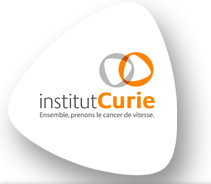Mechanisms Generating Cancer Genome Complexity: Back to the Future
Résumé
In the 1990s, fluorescent in situ hybridization approaches made it possible to analyze the early stages of gene amplification in mammalian cells. These studies established breakage-fusion-bridge cycles as a major mechanism of intrachromosomal gene amplification. They also revealed that the amplified DNA perturbed nuclear architecture and led to micronucleation, which suggested a mechanism for the shortening of amplified units. The "interphase breakage model" postulated that the tremendous genomic instability occurring at early stages of gene amplification resulted from the interweaving of an amplification mechanism (breakage-fusion-bridge cycles) and of a deletion mechanism (micronucleation and stitching of DNA fragments retained in the nucleus). This model is strikingly consistent with recent data and conclusions obtained from live-cell imaging and single cell genome sequencing. The comparison of both sets of data suggests new questions to explore.
Origine : Publication financée par une institution
